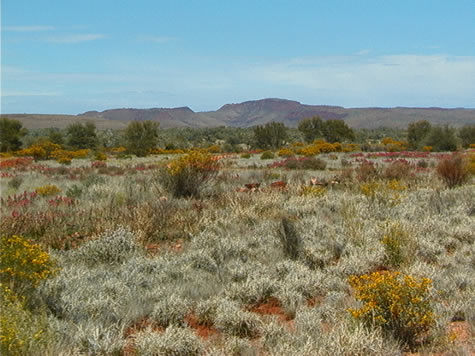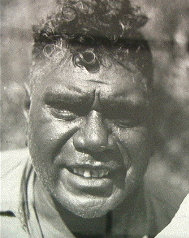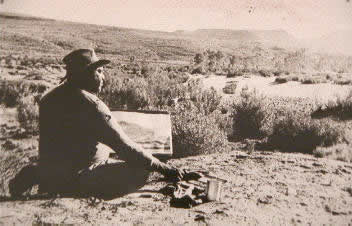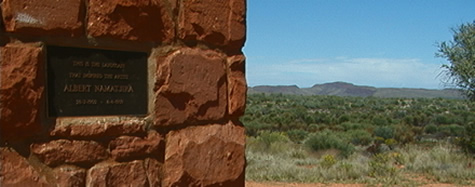Aboriginal Rights and HISTORY
Albert Namatjira 1902-1959

The aesthetic beauty of the landscape we travel through each day is inspiring. Even the landforms’ sameness within the span of a day or two via bike can become a sensory experience. Patches of cornflower blue petals growing from a clump in the middle of the dusty road can provide pleasure. The richness of this environment provides much beauty.
Albert Namatjira, from near the Hermannsburg Mission, was a master at capturing landscape images. His story demonstrates the ability of art to transcend cultural and language barriers.

Albert was an Aboriginal of the Arunda Tribe. He learned to read and write at the Mission school and earned a living as a blacksmith and handy man on neighbouring stations.
In 1934, Albert was introduced to Rex Batterbee, a watercolour artist, who held an exhibition at the Hermannsburg Mission. Batterbee’s artwork impressed Albert and within the next year, arrangements were made for Albert to guide and act as a camel boy for Batterbee’s next trip through the Red Centre. In exchange for his work, Albert was instructed by Batterbee and demonstrated the drive and application of a true artist. The country near his home provided Albert with an opportunity to showcase his talent for painting with watercolours.

In 1938, Albert’s work was exhibited in Melbourne and in following years exhibitions were held in Queensland, Western Australia, and New Zealand; his work could also be found in American and English collections. A book by Charles Mountford, “The Art of Albert Namatjira,” was published in 1946.

His success as a painter brought fame to Albert and recognition to the Aboriginal community. Because of this success, he was the first Aboriginal to be granted full Australian citizenship in 1957. However, with fame came a recognition not granted to other Aboriginals. Albert was able to purchase alcohol, which was outlawed in the Aboriginal community. He served a gaol sentence for eight weeks for supplying liquor to other Aborigines. The trial was controversial and the subsequent publicity shattered Albert. He died of pneumonia within three months after being released.
Albert’s paintings reflect a love for his native home and, it is said, the Dreamtime of Albert’s culture. His work today is appreciated world wide as it was in his lifetime. This pride was shared by the cultures of his country, which here-to-fore was non-existent. He experienced the best and worst of both worlds, but his paintings remain a celebration of the land of his people.
April